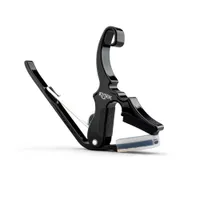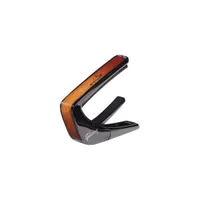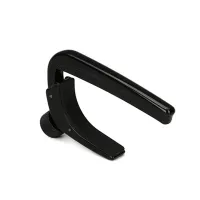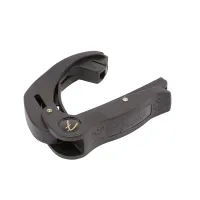Best guitar capos 2025: These are the tried & tested options I'd recommend for acoustic and electric players
I tested 10 of the most popular capos on the market. Here’s my expert picks for electric, acoustic, 12-string and beyond
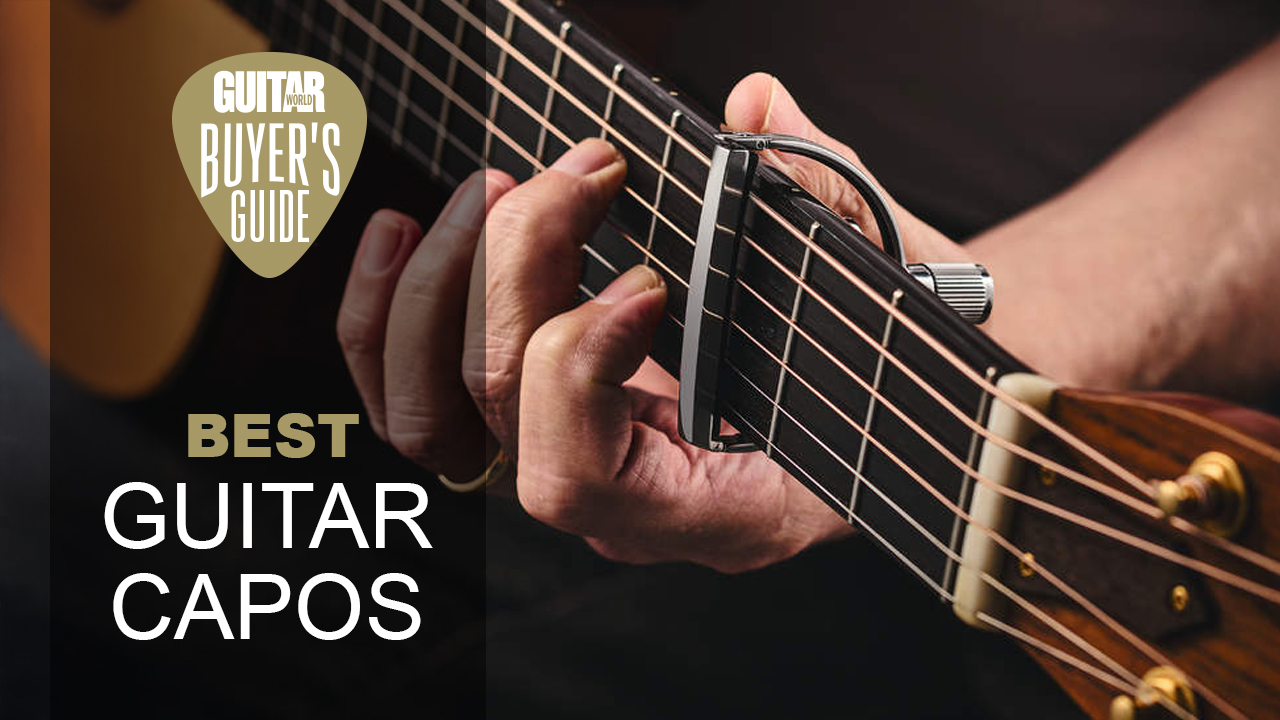
Okay, so I’ll go out on a limb and say that despite their simple design and relatively low cost, the best guitar capos are one of the most useful additions to any guitarist's arsenal. I genuinely believe that when used effectively, a humble capo can help unlock your creative potential, rejuvenating your tired old chord progressions and add another sonic tool to your songwriting toolbox.
I’ve been using capos for years, whether it's just transposing a chord progression to a different key or completely revoicing a composition for two different guitars during recording, I always have one or two of these handy guitar accessories at hand. To compile this list, I've tested all the different kinds of capos, including quick-release, trigger capos, and those that screw on with a clamp. I put them through their paces to see which model comes out on top.
I’ve also ensured that I test them in various scenarios. I’ve taken them to gigs, used them at home during songwriting sessions, and in the studio to change things up. So, I've got a great overview of which are most effective, whether playing electric, acoustic, or even 12-string guitars.
My top pick is the G7th Performance 3. It's seriously well made, and there are no adjustments needed when switching guitars. For those on a tight budget, I'd recommend the Ernie Ball Axis. I found it to be reliable, easy to use, and it comes in at an unbeatable price.
There are a lot of different capos to choose from, and different guitar types will require a particular capo, so you'll need to make sure you're picking the right one for you. I've organized all my favorite capos by use case to make things easier for you. If you've any further questions, please visit my FAQ section, which features answers to numerous common questions provided by me and our in-house guitar experts at Guitar World.
On the hunt for guitar gear savings this Black Friday? Shop our handpicked selection of the best Black Friday guitar deals.

"As part of my role at Guitar World, I'm getting hands-on with guitar gear daily for reviews, features, and buyer's guides - my reviews have also been featured in prominent publications like Total Guitar, Future Music magazine, and MusicRadar.com. I've been playing guitar for over 20 years, and even worked in music retail. For a little under a decade, I advised everyone from absolute beginners to seasoned pros on the right gear for their needs."
My top picks
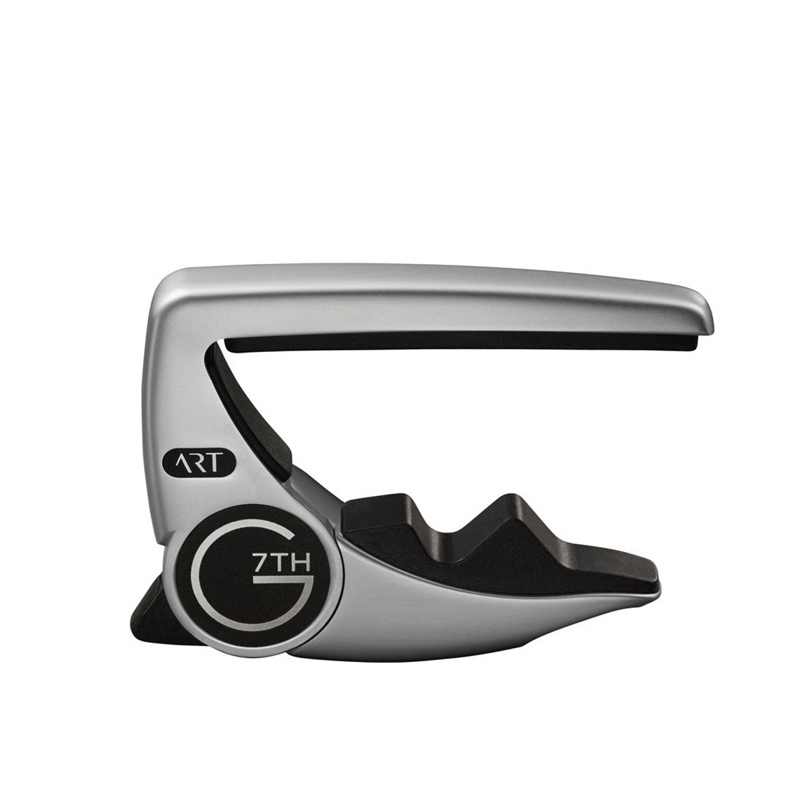
The G7th Performance 3 ART features the company’s Adaptive Radius Technology – a system within the top bar that adjusts to the curvature of your guitar’s fretboard. The benefit? In theory, there should be no buzzing strings at the capo’d fret as the device makes even contact with all six strings. In turn, that gives the best possible tuning stability, too.
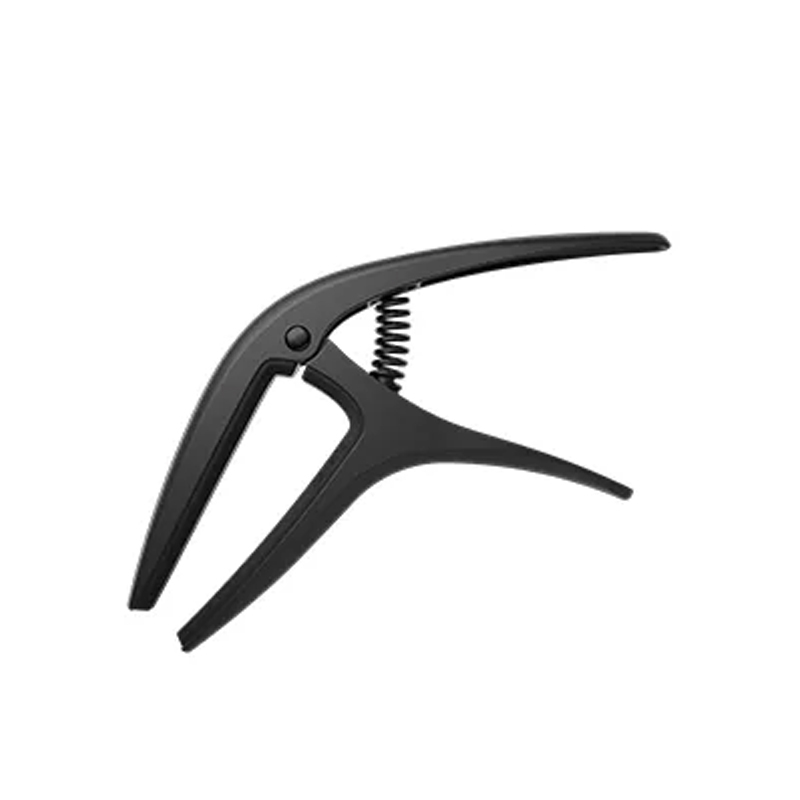
Ernie Ball’s tasty-looking Axis capo sure has curb appeal, but its talents aren’t purely skin-deep. Its main strengths are easy, one-handed operation and a wallet-friendly price.
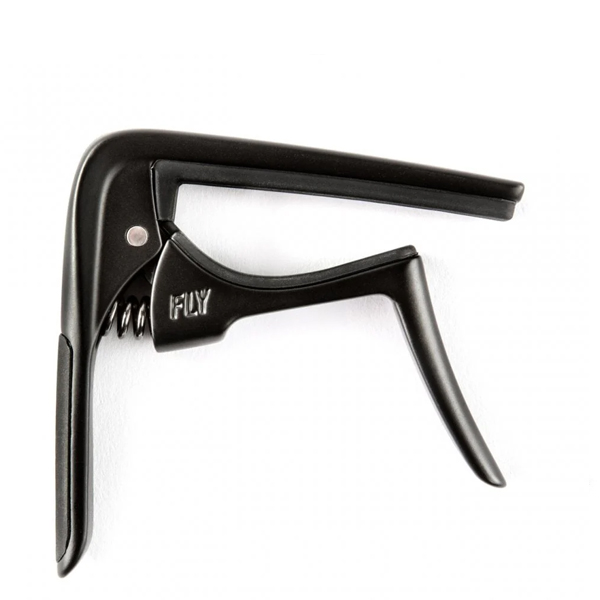
Dunlop’s Trigger capo has been around for a while. Some would say it’s another of those ‘industry standard’ pieces of guitar gear that we’ve all had our hands on at some point.
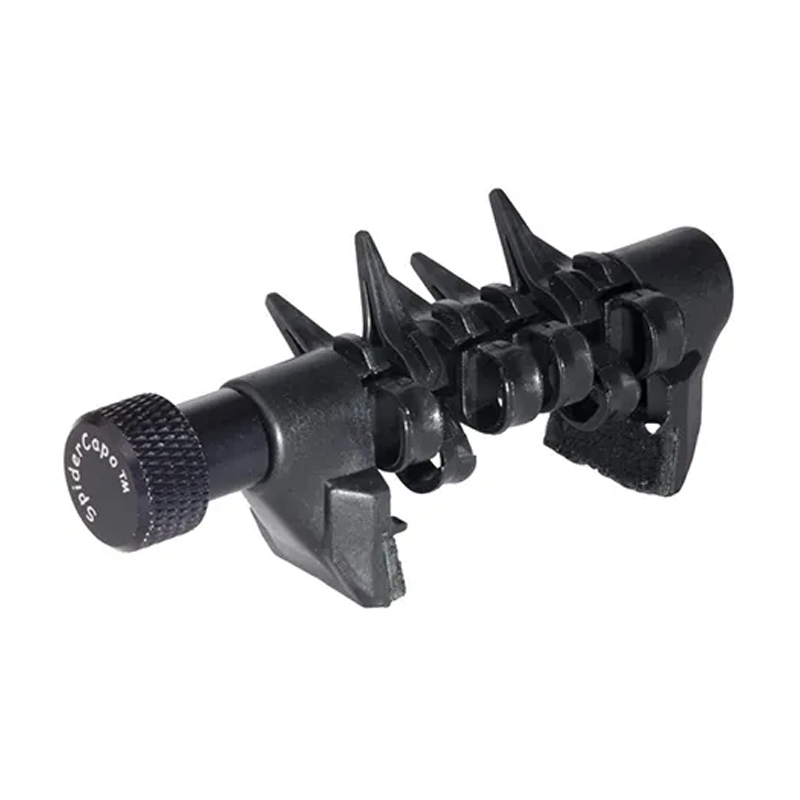
A creative take on a humble device, the SpiderCapo allows you to clamp each string individually, in turn offering up a world of alternate tunings – many that you might not have otherwise tried. All without actually retuning a string!
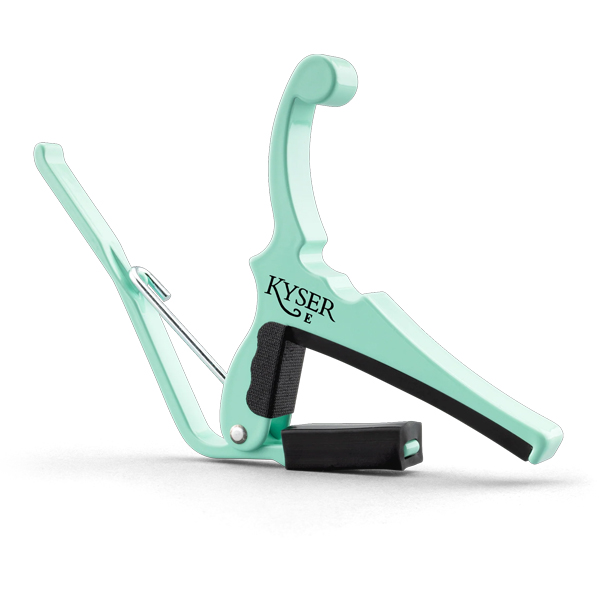
Teaming up with guitar titans, Fender, Kyser has launched an electric guitar capo that will perfectly match your instrument. This quick-release capo features the beloved trigger-style design that Kyser is known for, now available in vintage colors inspired by the golden age of electric guitar.
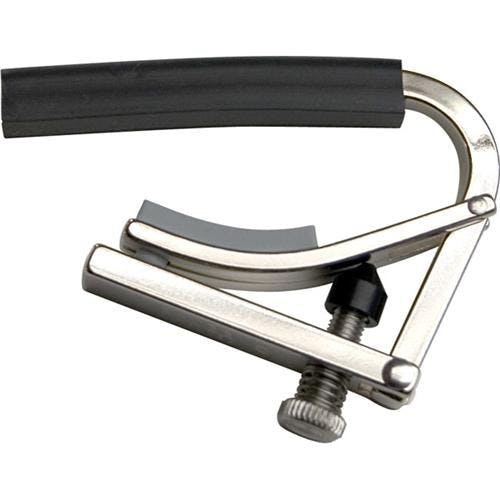
With a 12-string guitar, you’ll need a dedicated capo, as it requires much more force and a wider clamp to achieve correct intonation and prevent buzzing.
Best overall
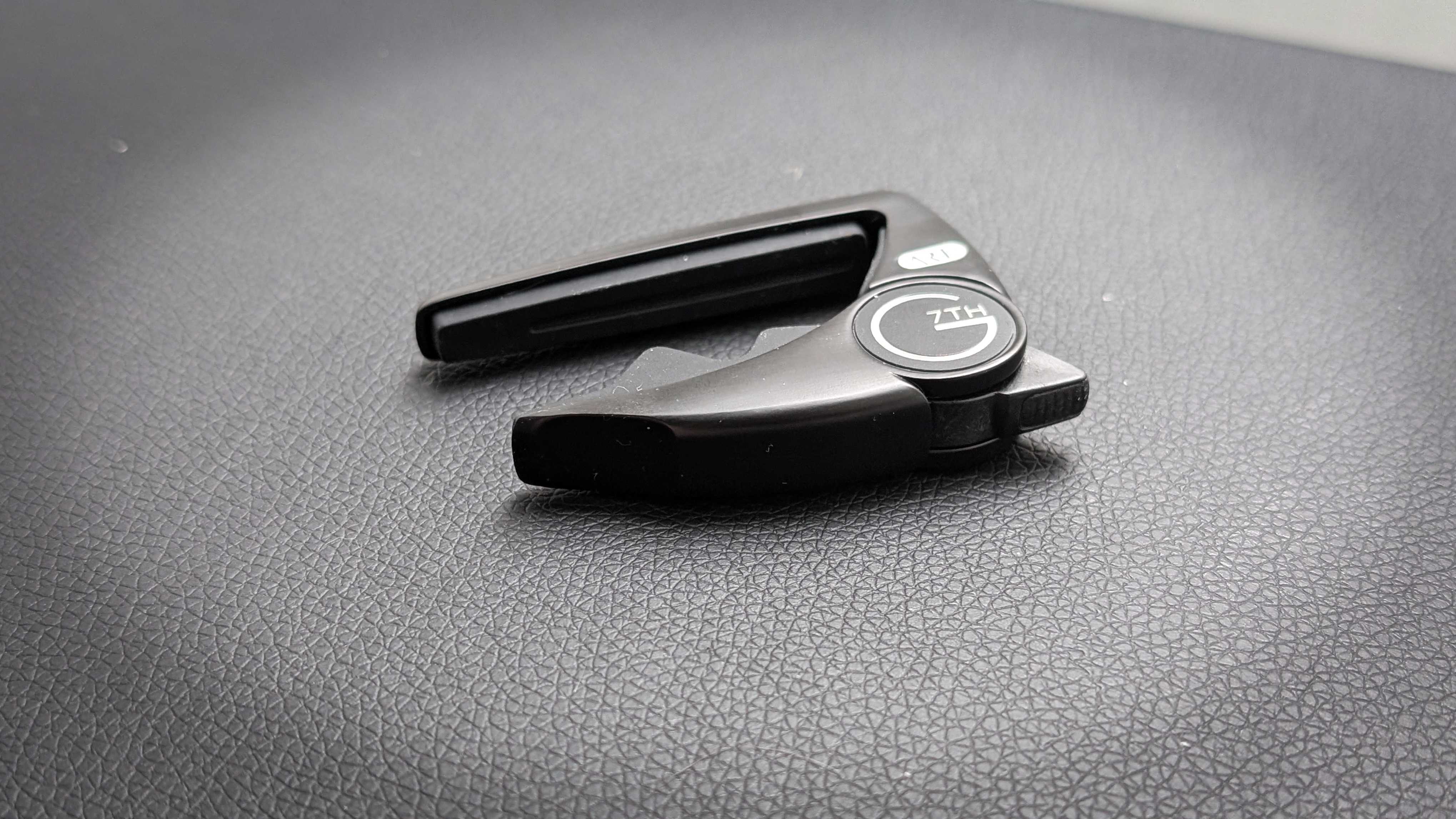
1. G7th Performance 3
Our expert review:
Specifications
Reasons to buy
Reasons to avoid
Build quality: ★★★★★
Usability: ★★★★★
Affordability: ★★★★☆
What is it? You can buy a capo for less than 10 bucks, so what’s G7th’s big idea charging over $50? Is it really worth the investment?
Well, the G7th Performance 3 ART features the company’s Adaptive Radius Technology – a system within the top bar that adjusts to the curvature of your guitar’s fretboard. The benefit? In theory, there should be no buzzing strings at the capo’d fret as the device makes even contact with all six strings. In turn, that provides the best possible tuning stability as well.
In practice: In hand, this capo feels weighty, sleek, and incredibly robust. It feels like a quality piece of kit, and at this price point, it ought to. Clamping the unit to the 2nd fret of my beloved Gibson J-45, and there were no adjustments needed – none. I simply attached the capo, fretted an Em chord, and each note rang out as clear as a bell.
Checking the intonation with my Boss TU-3 tuner, and it looks to be spot on, no sharp or flat notes, no pesky buzzing, and best yet, it’s slim enough not to get in the way while I’m performing.
In fact, that’s the thing I like about this capo the most. Unlike trigger capos with their long legs that like to stick out directly in my flight path, the G7th sits neat and tidy on my neck, in an unobtrusive manner. Moving the capo further up the register, where the neck starts to get noticeably thicker, and the tension keeps fairly uniform, and again, I had to make absolutely no adjustments to make the notes ring out loud and proud.
Now, G7th does say that, “With a little practice, a Performance 3 can be moved with one hand between frets nearly as quickly as a spring capo,” and while this is certainly true, it can be operated with one hand, I did find that the unit wanted to slip once you engaged the release button. To ensure you don’t scratch up your finish, I’d suggest using two hands when you can.
The bottom line: Superb intonation, coupled with a rock-solid build, comfortable usability, and, actually being not quite the priciest offering here, the G7th is a worthwhile consideration for any guitarist who demands high performance from their capos.
Best on a budget
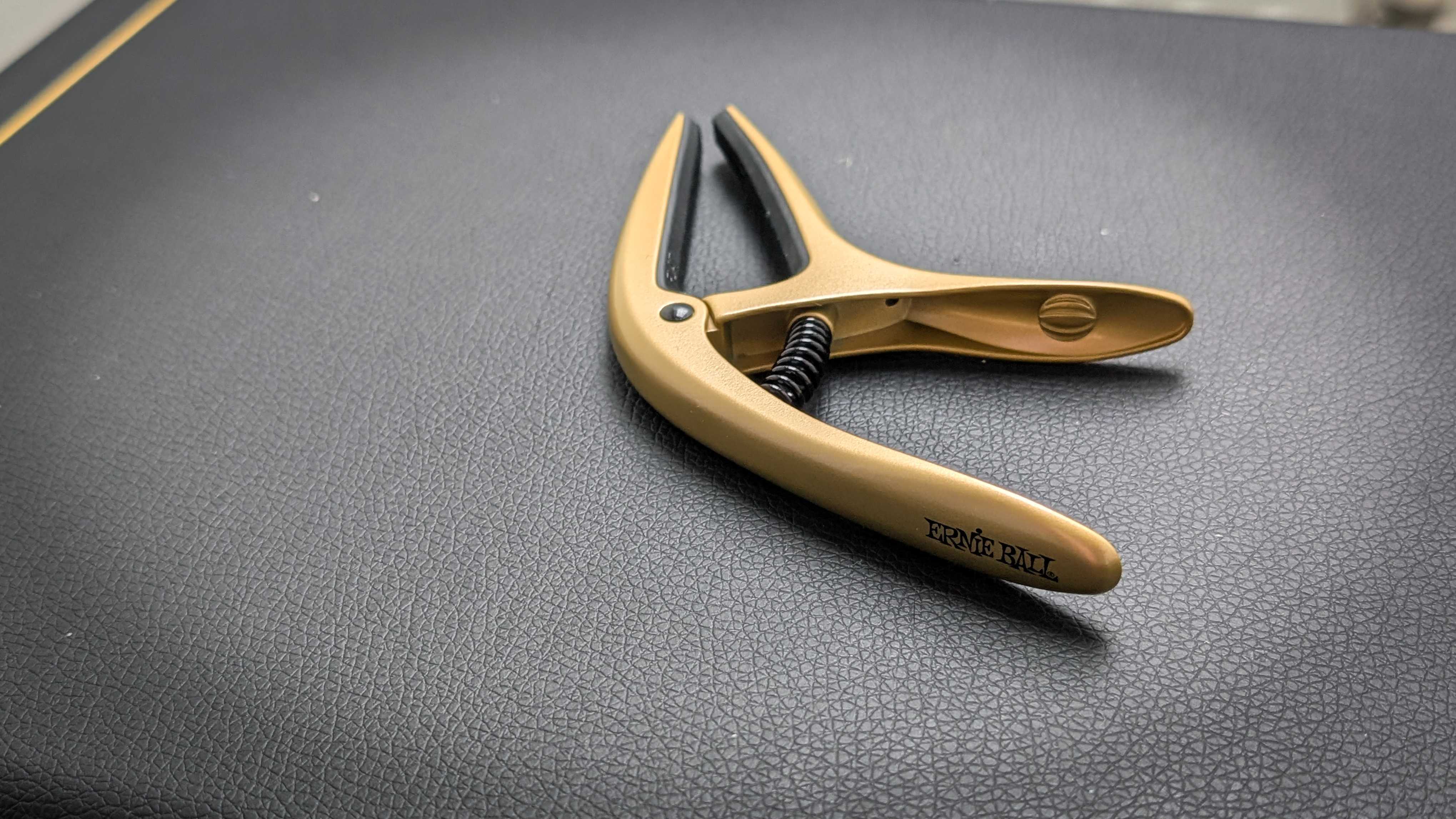
2. Ernie Ball Axis Capo
Our expert review:
Specifications
Reasons to buy
Reasons to avoid
Build quality: ★★★★½
Usability: ★★★★★
Affordability: ★★★★★
What is it? Ernie Ball’s tasty-looking Axis capo sure has curb appeal, but its talents aren’t purely skin-deep. Its main strength is easy, one-handed operation, and a seriously wallet-friendly price tag, which makes it our top pick on a budget.
And there’s no need to worry about the curvature of your guitar’s fretboard either. The Axis features two rubber-padded arms – one for flat fretboards and one for radiused fretboards. Just flip the capo around to suit your ’board.
In practice: Clamping down with considerable force, there’s no fear that the Ernie Ball Axis won’t produce enough tension to get a clear and crisp tone out of your guitar. The spring on this capo feels quite stiff and requires a fair amount of pressure to open up. That’s not a bad thing, though. In my tests, I found that this Ernie Ball capo delivered an even and consistent amount of pressure across the strings, regardless of whether I was playing my acoustic or electric guitar.
It’s well made, too. Despite its tiny price, this capo is satisfying to hold. The aerodynamic design has been expertly put together, and it feels robust enough to withstand the stresses of touring. However, if I were to have one gripe, it would be the extra-long legs. For me, they stick out a little too far and can get in the way of my playing. Yes, the capo itself is slim, but with the longer legs, this is a rather large capo and not one you’ll easily forget you’ve got on your guitar, that’s for sure.
That said, I can’t deny how good this capo is for the price. It’s extremely well made, the tension is fantastic, and the intonation is perfect – some expensive capos aren’t this easy to use.
The bottom line: Overall, the Ernie Ball Axis capo is an excellent choice for both beginners and experienced players. Its combination of functionality, durability, and style makes it a worthy addition to any guitarist's gig bag. I can safely say that whether you’re playing at home or on stage, this budget-friendly capo won’t let you down.
Best for acoustic
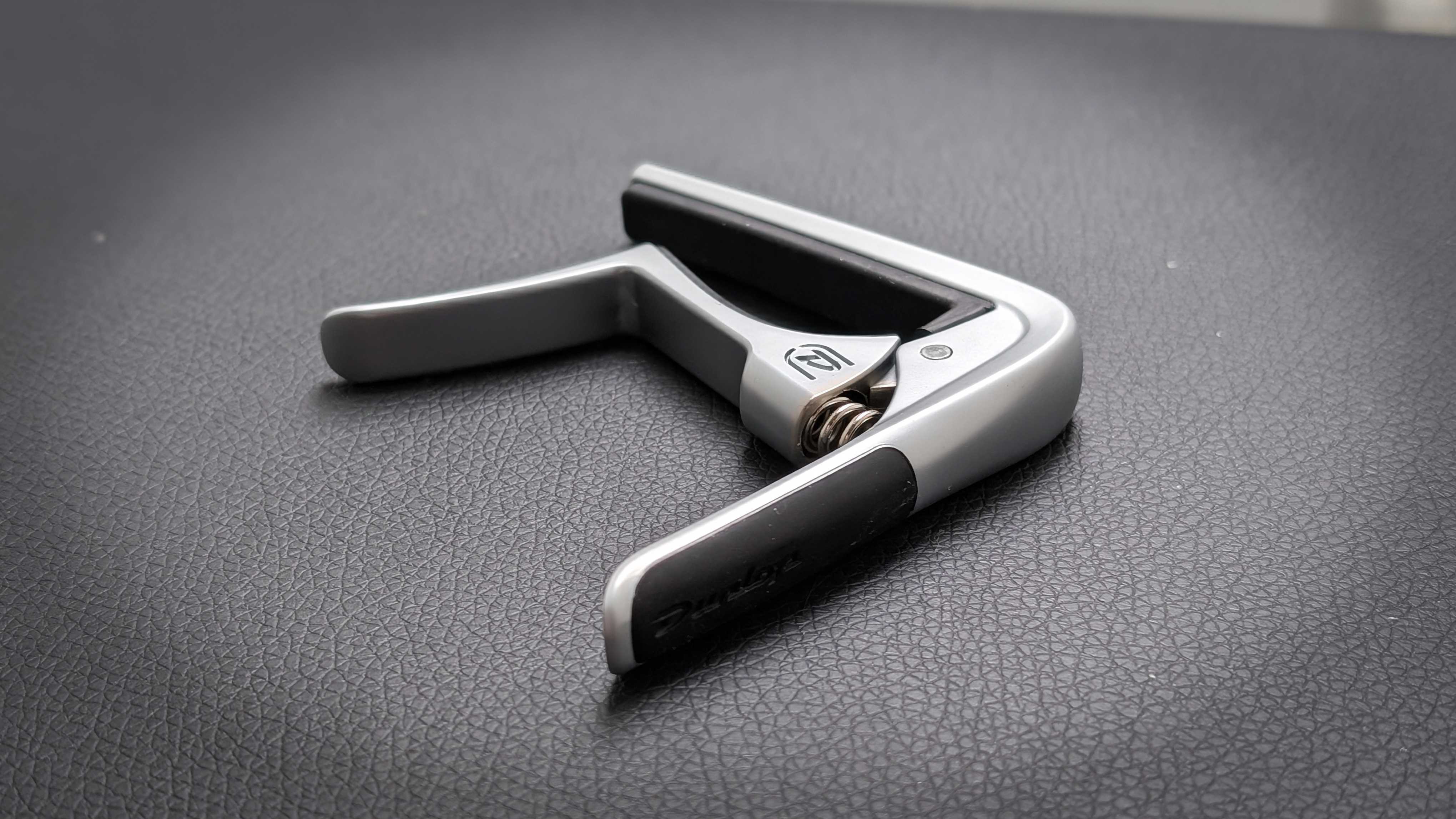
3. Dunlop Trigger Fly Capo
Our expert review:
Specifications
Reasons to buy
Reasons to avoid
Build quality: ★★★★★
Usability: ★★★★ ½
Affordability: ★★★★ ½
What is it? Dunlop’s Trigger capo has been around for a while. Some would say it’s another of those ‘industry standard’ pieces of guitar gear that we’ve all had our hands on at some point. Recently, Dunlop has retooled the famous capo, giving it a contemporary makeover with sleeker modern ergonomics. Gone are the sharp, square edges in favor of a more rounded and smoother design.
Like the Axis, you can easily change the key with just a squeeze of the Trigger’s spring-loaded arms. Easy! Dunlop says the “specially engineered custom spring mechanism applies balanced pressure for easy placement and precise intonation up and down the neck,” and that it can even work up "as far as the 7th fret of most acoustics" – ideal for those looking to cover You’re Beautiful at the local boozer!
In practice: I’ve had the same, rather beaten-up, black Dunlop Trigger capo for years. In fact, it was the first capo I ever got around 20 years ago. Yes, I’ve had other capos over the years, but the fact that this basic Dunlop model still works every bit as well as it did the day I bought it makes it easily one of the best capos on the market, for sure.
It’s a design I’m so accustomed to that I didn’t really think it needed to be improved. That was until I got my hands on the new Trigger Fly. It’s noticeably smoother to hold, and feels much nicer in hand, like I’ve just switched from a chunky ‘58 Les Paul to a wizardly fast Ibanez Jem.
I think there’s more tension in the spring, too. The pressure is applied evenly across all strings, and just like Dunlop says, it works all the way up the neck. I could comfortably get the capo to fret all the way up to the 9th fret with no problems at all – and the J-45 does get fairly chunky around that area.
The bottom line: With a reassuringly sturdy build, the Trigger Fly is a serious capo and takes my top pick for the best for acoustics due to how easily it glides up the neck. I do think that the Axis has it licked on price, and if you’re on a tight budget, that is the obvious choice, but if you’re looking for an upgrade and you like the trigger style, this is most definitely the capo for you. In my opinion, there’s nothing to dislike here. It’s a great capo with proven longevity.
Best partial capo
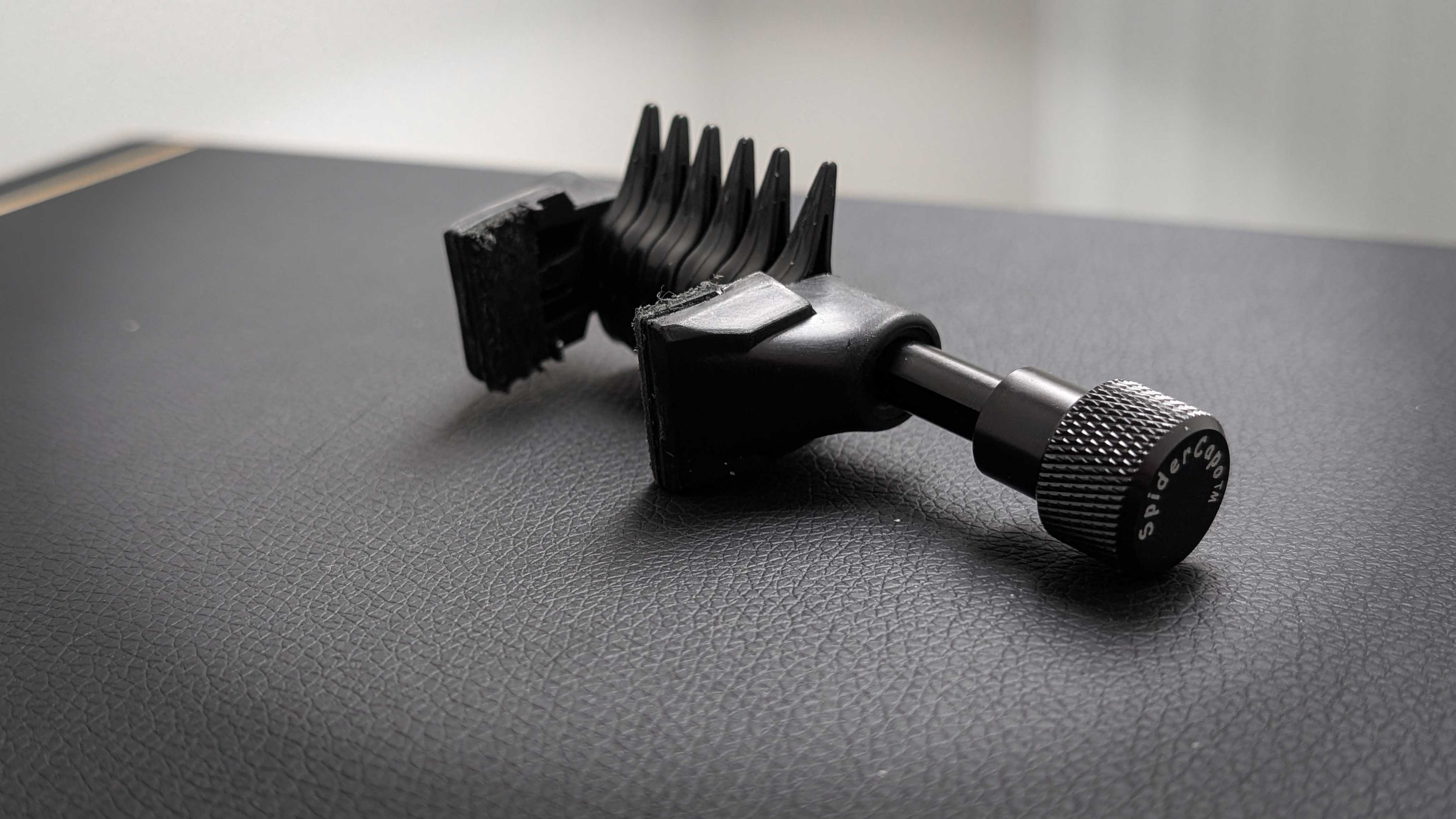
4. Creative Tunings Universal Spider Capo
Our expert review:
Specifications
Reasons to buy
Reasons to avoid
Build quality: ★★★★☆
Usability: ★★★★☆
Affordability: ★★★★☆
What is it? A creative take on a humble device, the Spider Capo allows you to clamp each string individually, offering a world of alternate tunings – many that you might not have tried otherwise. All without actually retuning a string! You could, for instance, place a Spider Capo at the 2nd position, clamp the fretted strings of an open A chord, and leave the others open – that’s open A tuning. You can only capo one fret, however, so more complex chordal tunings are not an option.
In practice: Out of all the capos on this list, the Spider Capo was the one I was the most excited about slapping on my guitar. I really dig open tunings, but tuning and retuning the guitar can be a total faff at times, and if this capo does what it says it does, then it could solve so many issues for me.
Upon unboxing the SpiderCapo, I initially felt a tad apprehensive, as it has a slightly flimsy appearance compared to the mountain of metal capos I've received over the last couple of days. The plastic string clamps don’t inspire immediate confidence in their security, and I found myself wondering how well they would perform under pressure. However, I decided to give it a fair shot.
Attaching the Spider Capo to my J-45 was a straightforward process. The design includes padded ends to ensure I wouldn't damage the finish of the guitar neck while clamping it down. With the capo in position, I was ready to dive into some creative exploration.
Choosing which strings to fret was where the real fun began. The ease with which I could select the desired strings allowed for some quick experimentation. For example, pressing down the second and third arms at the 2nd fret gave me an Em chord. What’s more, when I added the 5th and 6th arms, I was able to create more complex intervals that enriched the chord's texture.
As I experimented further with various chord voicings, I discovered a plethora of alternate tunings that I had never tried before. For instance, placing the SpiderCapo in different fret positions and altering the strings I fretted opened up sounds that were refreshing and inspiring. It felt like unlocking hidden doors of creativity, allowing me to play songs in a way that I had previously thought too complex or time-consuming with conventional tuning methods.
Overall, the SpiderCapo proved to be a surprisingly fun tool that added an element of creativity and spontaneity to my playing. It motivated me to think outside the box and explore musical ideas in ways I hadn’t considered. Once I got the hang of the adjustments, I was able to progress faster, and I can definitely see this capo being a valuable asset in my musical toolkit, despite its somewhat flimsy appearance. It certainly opened up new avenues for inspiration in my practice sessions.
The bottom line: The SpiderCapo is a unique tool that opens up a new realm of possibilities for guitarists seeking to explore alternate tunings without the hassle of retuning. Its lightweight design and versatility make it an appealing choice for those who enjoy experimenting with different chord voicings. However, the build quality may give some players pause, especially when compared to more robust metal capos. If you’re willing to overlook the flimsy feel for the sake of creative exploration, the SpiderCapo could be a valuable addition to your musical toolkit. Overall, it’s a fun device that will most definitely spark new musical ideas. It certainly did for me.
Best for electrics
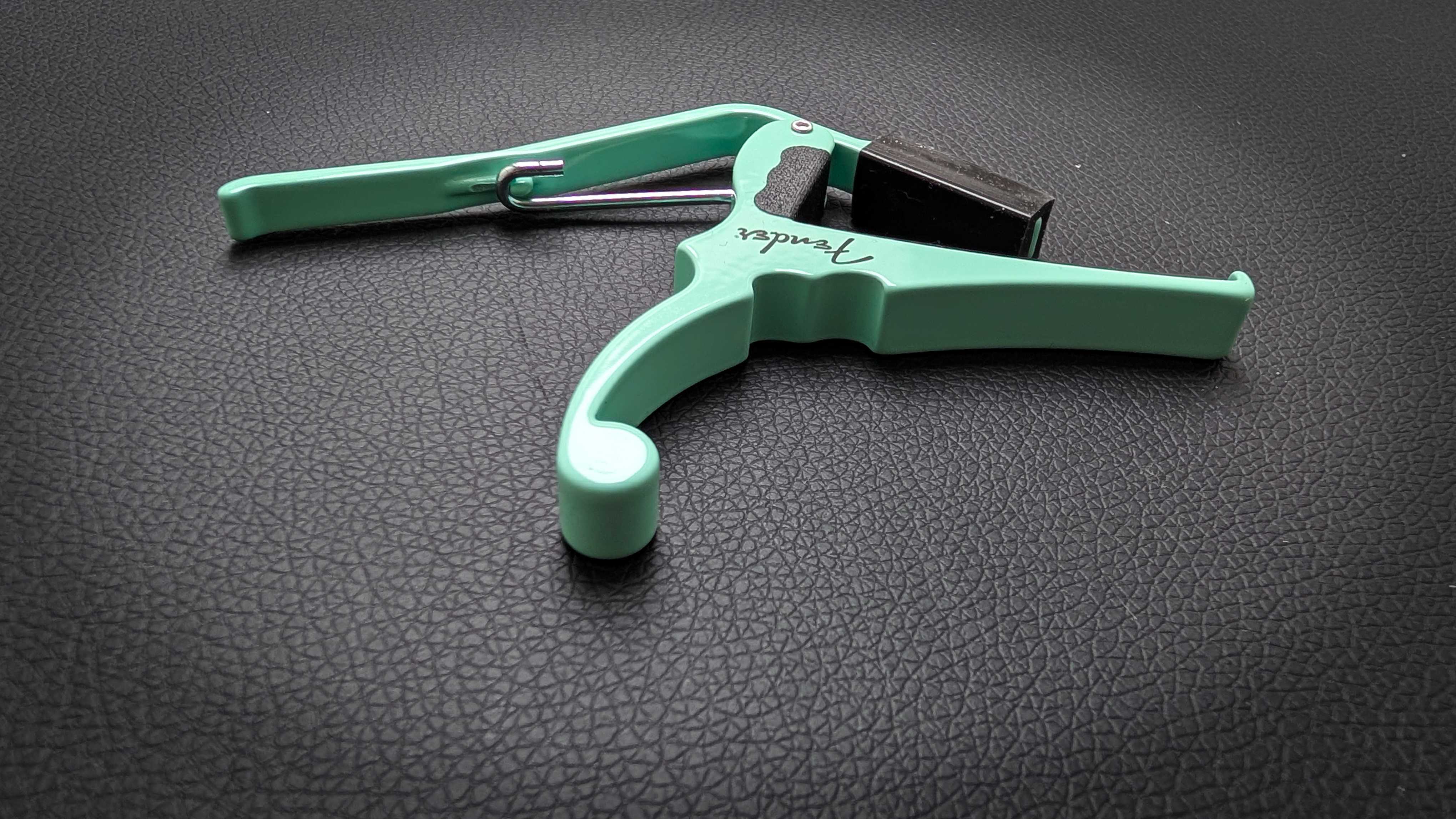
5. Kyser X Fender
Our expert review:
Specifications
Reasons to buy
Reasons to avoid
Build quality: ★★★★★
Usability: ★★★★ ½
Affordability: ★★★★ ½
What is it? Teaming up with guitar titans, Fender, Kyser has launched an electric guitar capo that will perfectly match your instrument. This quick-release capo features the beloved trigger-style design that Kyser is known for, now available in vintage colors inspired by the golden age of electric guitars through the innovative Color Match Process.
Kyser has paid attention to every detail, ensuring perfect tension and intonation for a seamless pairing with your favorite Fender electric guitars, particularly those with a 9.5” radius. Kyser is renowned for sturdily made capos, and this one is no different. Made from strong aluminium, it offers sturdy build quality and, best of all, it’s relatively cheap.
In practice: Switching out my J-45 for a Fender Strat, I set about testing this rather colorful capo. Now, I’ll admit that I rarely use a capo when playing electric guitar, and when I do, I typically opt for my acoustic capo and hope for the best. While this approach does work, it isn’t without its own set of problems. Namely, the string tension and radius on the capo can make intonation an issue.
To ensure the best possible intonation, it pays to have a capo that perfectly matches the curvature of your fingerboard, and as this Kyser model features the standard 9.5” radius found on many Fender instruments, it fit my Strat like a glove. Checking the trusty TU-3 tuner, it shows again that there is near-perfect intonation from this capo. I can comfortably get the capo up as far as the 11th fret, before it starts to feel a little tight – not that I’d ever use a capo that high up on the fretboard.
It also has a very strong spring mechanism. It takes a firm grip to squeeze it open, but I appreciate the rigidity. This capo literally feels like it could last a lifetime. If I were to level one small criticism at the Kyser, it would be the unnecessarily long legs. Now, unlike the Dunlop Trigger, the Kyser faces forward with the legs placed in front of the fingerboard, not behind, so they are unlikely to get in the way, but I still feel they are a touch too long. I am aware that these long, spindly legs contribute to the Kyser’s iconic silhouette, and for many, this is how a capo should look.
The bottom line: The Kyser X Fender capo has taken my spot as the best capo for electric guitar and rightfully so. It’s superbly well made, has the perfect radius for most electric models, and you can’t deny that it looks effortlessly cool in Fender’s legendary pastel colors.
Best for 12-strings
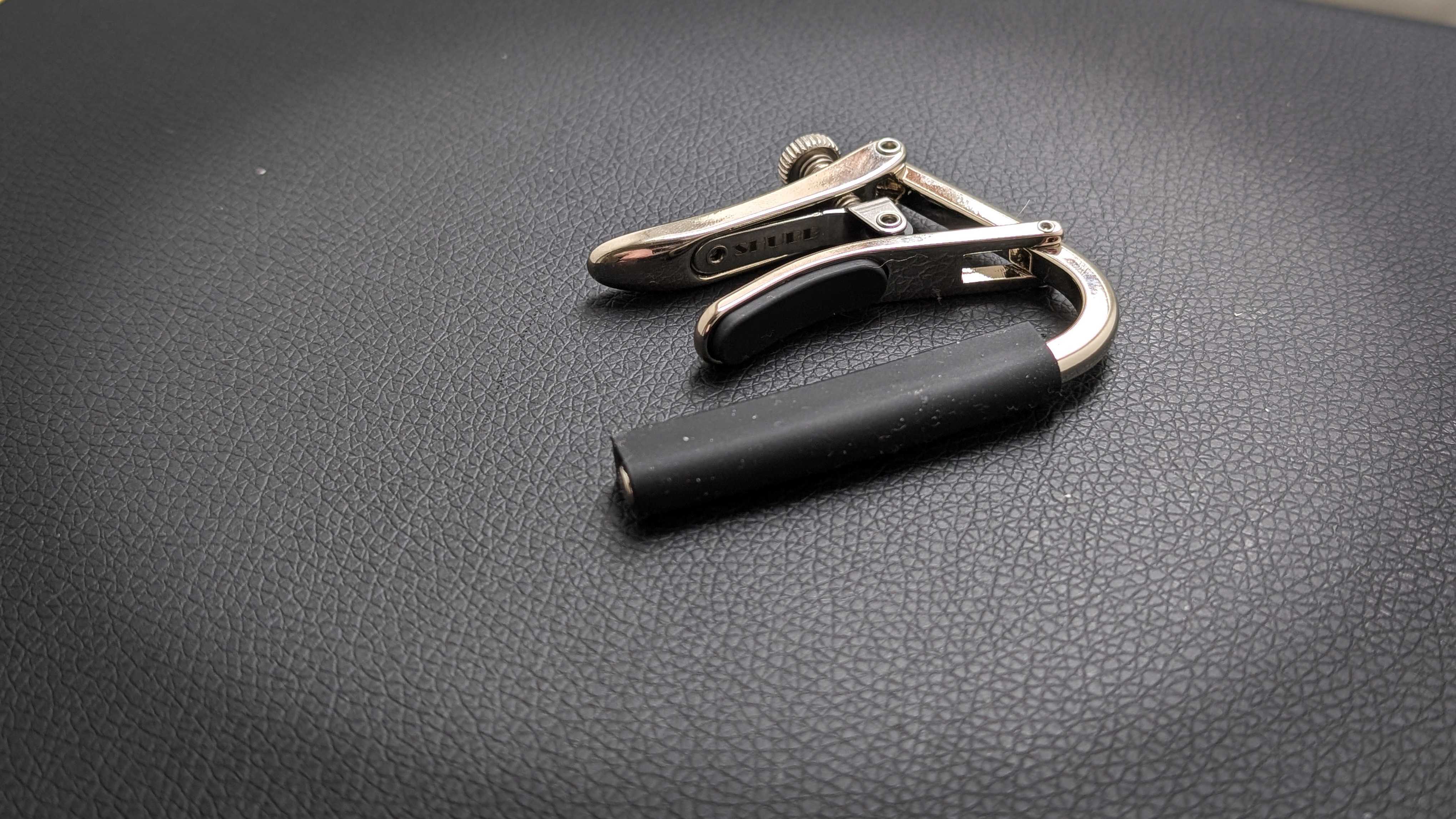
6. Shubb C3 12-string
Our expert review:
Specifications
Reasons to buy
Reasons to avoid
Build quality: ★★★★★
Usability: ★★★★☆
Affordability: ★★★★☆
What is it? With a 12-string guitar, you’ll need a dedicated capo, as it requires much more force and a wider clamp to achieve correct intonation and prevent buzzing. The Shubb Standard C3 12-string capo is the unit I’ve selected for the job.
This innovative capo was first introduced around 40 years ago, and it hasn’t really changed all that much. Sure, it’s been given a few small tweaks over the years, but its basic mechanical principle remains the same.
A capo of svelte design, its diminutive frame shouldn’t inhibit your playing around the clamped fret either. Simply flip the lever to lock the capo in place or remove it – after you’ve adjusted the screw tensioner for optimal pressure, that is.
In practice: My 12-string of choice is the fabulous Squier Paranormal Jazzmaster XII. This affordable, yet absolutely brilliant, guitar has been a staple in my home studio since I acquired it a few years ago. Now, a lot of this guitar’s appeal is how good it sounds playing chimey open chords, and that’s where a capo comes in very handy when transposing parts to a new key.
That said, none of my current crop of capos were up to the job. The tension on the strings is just too great for standard capos, and not to mention the neck is just too thick for a normal capo to accommodate – it can feel like playing a skateboard at times. That is, until I tried this Shubb model. This clever little capo is exactly what I was looking for. Small enough to be completely unobtrusive, yet powerful enough to hold down all 12 strings without issue.
Now, it’s worth pointing out that this capo has a manual thumb wheel used to set the correct tension. Sure, it’s barely a 20-second task, but if you regularly move your capo around the fretboard or to a second guitar, the speed of a quick-release capo may be preferable, especially in a live setting.
Still, it’s a minor gripe, and as I’ll only be using this capo on a single guitar, it really wasn’t a problem for me. In fact, I actually like being able to set the pressure to exactly what I want.
The bottom line: In my opinion, this is a great design for 12-string guitars, a well-built industry standard that should give years of reliable use. Simply set the desired tension and forget about it.
Also tested
Kyser Partial Capo
★★★★☆
Type: Quick release | Adjustable tension: No | Material: Lightweight aluminium | Suitable for: Acoustic or electric
The Kyser partial capo is ideal for those looking to explore drone strings, experiment with new tunings, or discover new ways to play open chords. Just like the other Kyser capo that made this list, this one is well-made and reasonably priced. However, I found it to be very limiting when compared to the Spider Capo, which can do everything this model can, but way more.
Thalia Gibson Hummingbird Capo
★★★★☆
Type: Quick release | Adjustable tension: No | Material: Aluminium | Suitable for: Acoustic or electric
At over $100, this Thalia capo is most definitely a premium product – and it feels like it. It’s considerably heavier than others in this guide and has a high-end finish that complements a top-of-the-line acoustic. That said, I don’t think it brings anything new to the table, and in fact, it offers less than some of the most affordable options included here.
D'Addario Capo Pro
★★★★☆
Type: Quick release | Adjustable tension: No | Material: Aluminium | Suitable for: Acoustic or electric
Both lightweight and slimline, this capo from D’Addario is designed to have as little negative impact on your playing as possible. Minimal mass means the Pro doesn’t weigh your guitar’s neck down (a potential concern when capo-ing at the 1st or 2nd fret), and its diminutive stature makes for easy fretting beside the capo.
Fender Smart Capo
★★★★☆
Type: | Weight: | Adjustable tension: No | Material: | Suitable for: 6-string electric
Despite pretty much everything being monikered as ‘smart’ these days, the Fender Smart Capo really is quite clever. Its patent-pending design makes it the perfect capo for the player who needs to make rapid changes.
You can easily move this capo with one hand, great for performers when you need to quickly switch between songs or even in the middle of the song if you’re the daring kind. The squeeze on nature means that you can always add the perfect amount of tension, too.
How to choose a capo
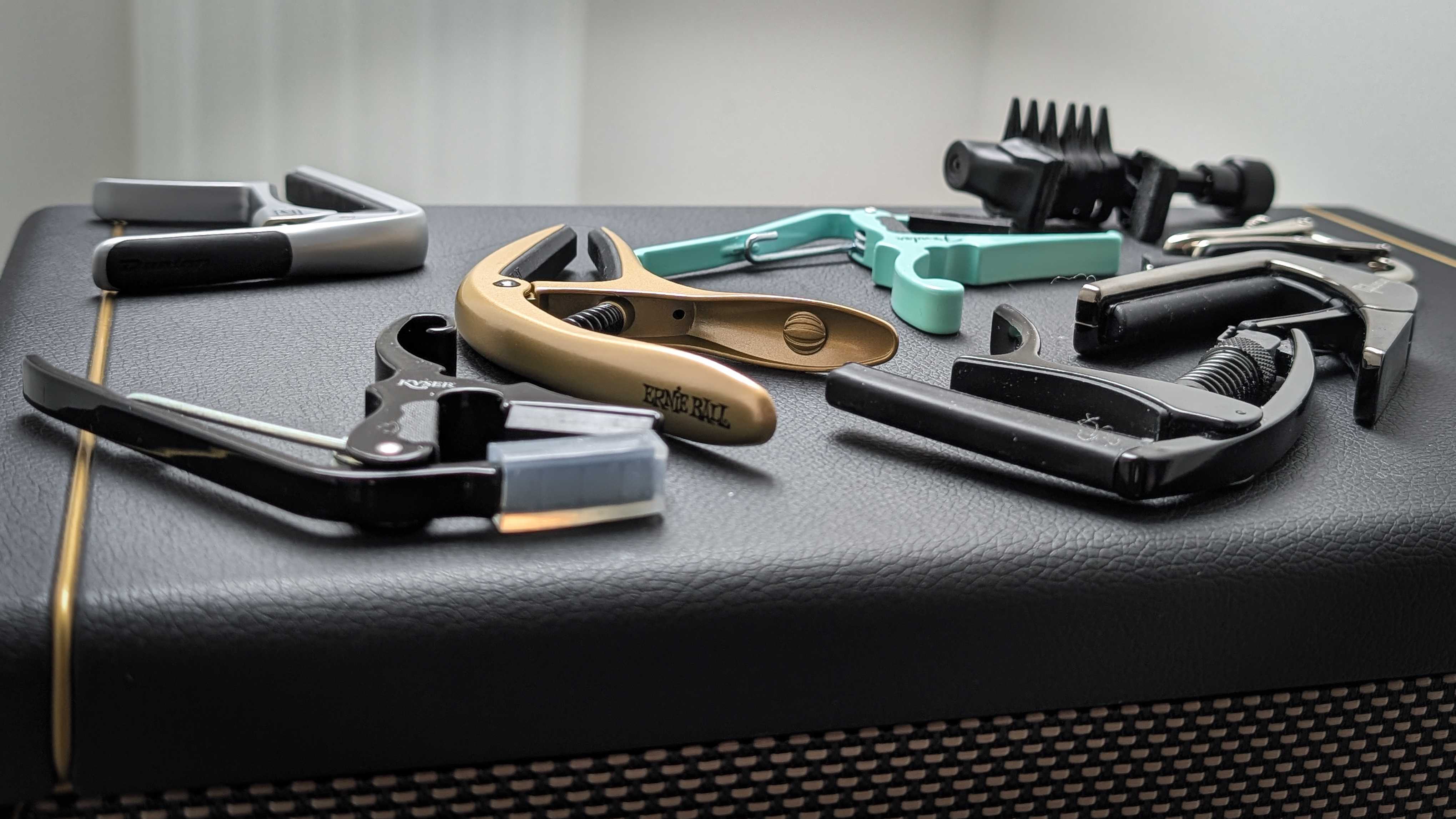
A guitar capo is a relatively simple bit of kit, but it has a very important job to do for guitar players. A poorly designed capo will 'pull' the string out of tune and clamp down with uneven force, resulting in bad intonation and fret buzz.
Here are the key areas to consider when buying a capo.
Build: When we test a guitar capo will start by assessing how rugged it is, and you should too. Does it feel as though it's going to put up with the abuse that comes with playing live or working in a busy studio? Does it have any extra features to make life easier for guitarists, like a quick-release system or adjustable tension?
The perfect fit: Once you've thoroughly assessed its features, you’ll then want to try the capo for real. Depending on the type it may be on an electric, acoustic, classical, 12-string guitar or even a ukulele. The capo needs to clamp down evenly across all the strings, regardless of how many are there, ensuring that each string is locked down.
Intonation: Next, pay careful attention to intonation. A bad capo design can put your guitar out of tune, but a good capo won't affect the tuning of the guitar when you put it on. Poor clamping or uneven tension can also result in fret buzz, giving you dead notes that don't ring out. A great capo will press your strings down, retain tuning and intonation, and be nice and easy to use, and that's what we're looking for when we're testing for a truly great guitar capo.
Read more about our rating system, how we choose the gear we feature, and exactly how we test each product.
Key terms
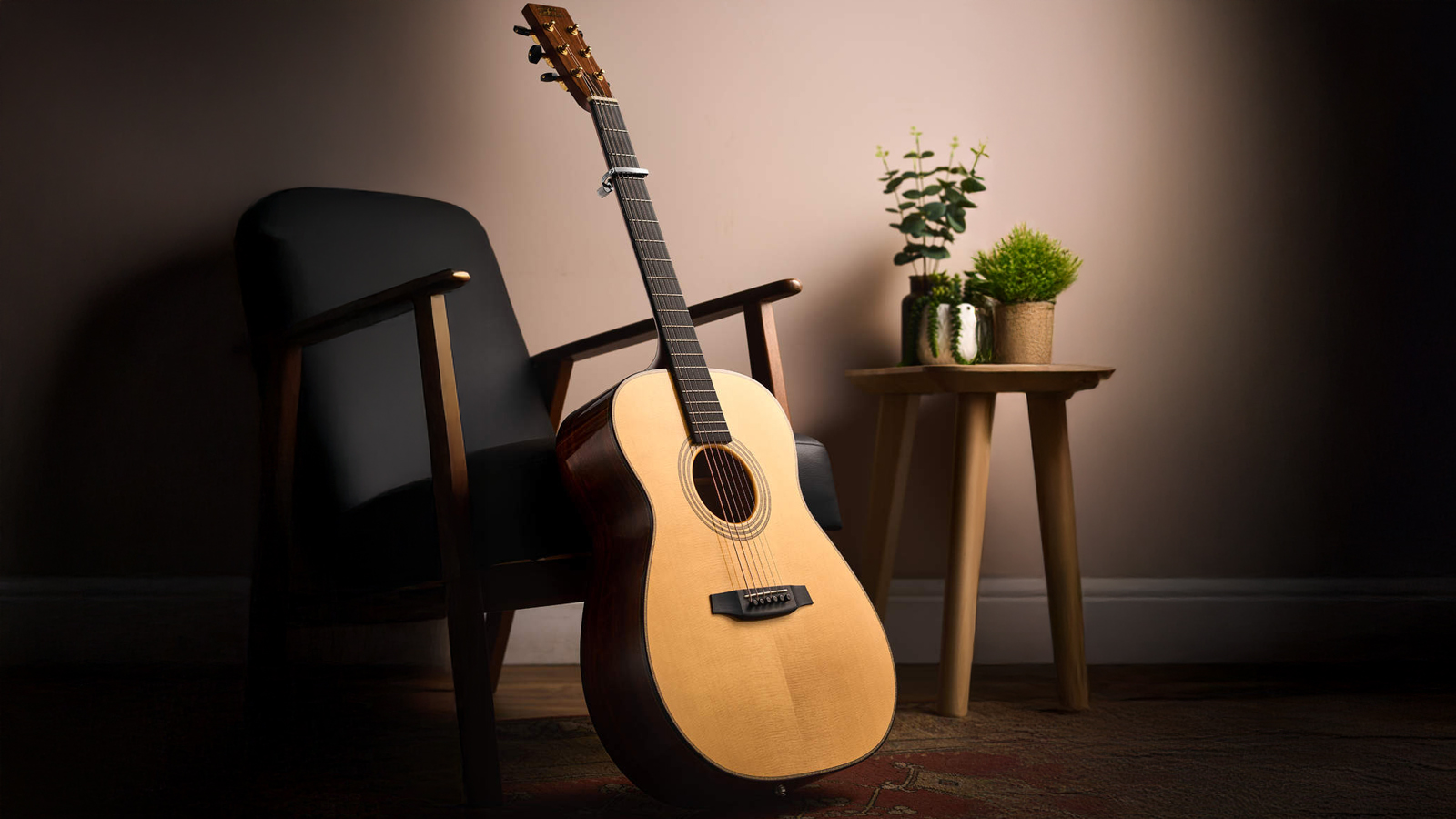
Capo: A device that clamps down on the strings of a guitar at a particular fret, allowing the guitarist to change the pitch of the strings without altering finger positioning.
Fret: The metal strips located on the neck of the guitar. Each fret represents a half-step in musical pitch. A capo can be placed on any fret to raise the pitch.
Nut: The small piece at the beginning of the guitar neck where the strings rest before reaching the fretboard. The capo is used to effectively shorten the vibrating length of the strings starting from the fret where it is placed.
Transposition: The process of changing the key of a song or piece of music. A capo allows guitarists to easily transpose songs to fit their vocal range or the style they desire.
Key: The musical scale on which a piece of music is based. Using a capo can help you play a song in a different key without changing the fundamental chord shapes.
Tension: The amount of force exerted on the strings. Using a capo will change the tension slightly as the strings are pressed down at a fret.
Partial Capo: A capo that only covers some of the strings instead of all six. This allows for unique sounds and is useful for creating specific chord voicings.
Trigger Capo: A type of capo that uses a spring mechanism for easy attachment and removal from the guitar neck. It allows for quick adjustments during performances or practice.
Spring: In the context of a trigger capo, the spring is the mechanism that provides tension to hold the capo firmly against the strings, ensuring that they are pressed down evenly without buzzing.
FAQs
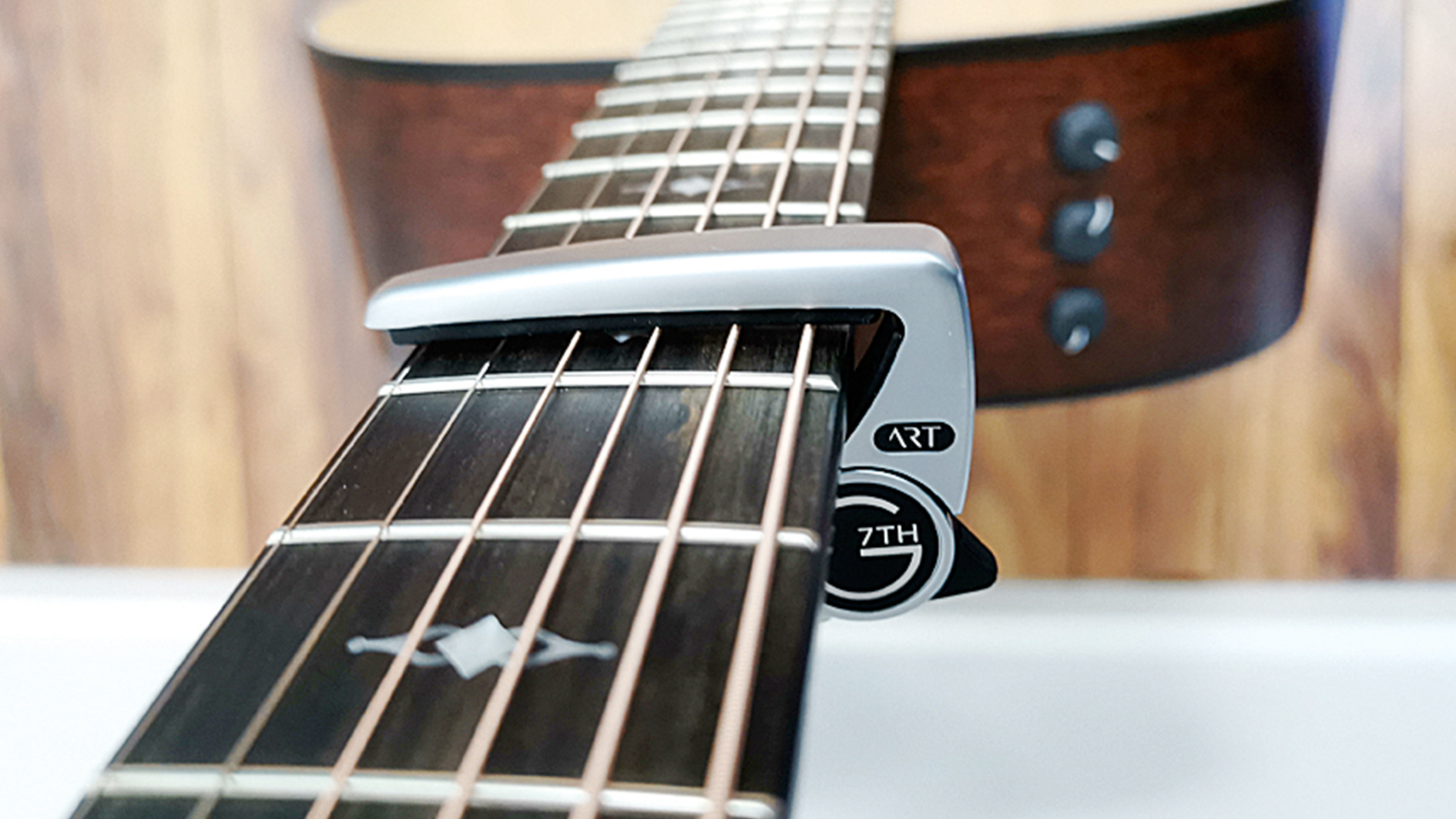
There are loads of different capos, all of which will work on different instruments. At first, it can seem a little confusing, but with our expert knowledge, you'll soon have the right one for your instrument.
What is a guitar capo used for?
Primarily, a guitar capo is used for changing the key of your instrument. For example, if you place a capo on the second fret of your guitar and play the chord shape that would ordinarily be an open E major, you’ll now be playing an F# major instead. This can be really useful when working with different singers, as they may need the pitch of the song changed to match their respective vocal range.
Capos also offer up interesting uses when revoicing chords. You can take a regular chord progression, add the capo and change the chord shapes. This gives you the same chords but with a different voice, and thus a more interesting sound. Pair it up with a guitar playing the original voicings and you can add a much richer tone to your recordings.
Lastly, a capo can be used as a purely creative tool, allowing you to use ringing open strings to create chords that would be impossible to fret without the use of a capo. Many bands over the years have utilized this, so next time you’re feeling uninspired, whack your capo on and try those same chord progressions again - you might well find something truly inspiring at your fingertips!
Do capos fit all guitars?
Ultimately, your first consideration when choosing one of the best capos should be to choose one that fits your guitar. Most brands offer a range of options, so if you see a capo you like, there’ll probably be one designed to fit your guitar.
Generally, capos are designed to fit as universally as possible, so you shouldn't need to buy a specific capo unless your neck or fretboard is exceptionally different from the norm. A capo that fits on a regular acoustic guitar will most likely do the same job on an electric. There are, however, specific capos for Ukuleles, 12-string guitars, and classical guitars.
The reason for this is obvious with ukuleles as they're much smaller, less so with the other two. Because of the extra set of strings on a 12-string acoustic or electric, you'll need a higher tension to effectively clamp down the strings. On a classical guitar, it comes down to the flat fretboard radius as we mentioned before, which requires a specific capo design to work properly.
What is fretboard radius?
You might be confused by all this talk of fretboard radii, but you needn't be. Radius refers to the curvature of this vital part of your guitar. Some guitars (like certain vintage Fenders) feature rounded boards, whereas others are nearly flat. While each has its own benefits, suffice it to say that different fretboard designs represent a compromise in capo design.
Fix a rounded capo on a flat fretboard (or vice versa), and you’ll end up with unwanted string buzz (the noise made where strings aren’t fully clamped) and poor tuning (where strings are pushed sharp from over-tightening the capo). In a perfect world, every capo would apply even force across all six strings (and at every fret position), in order to prevent these problems.
Generally, capos can be divided into radiused capos for rounder fretboards; flatter designs, typically for shreddy SuperStrats and classical guitars; and all-in-ones – capos that either accommodate different radii (such as the G7th) or incorporate both a flat surface and a rounded one into their design.
How I tested the capos
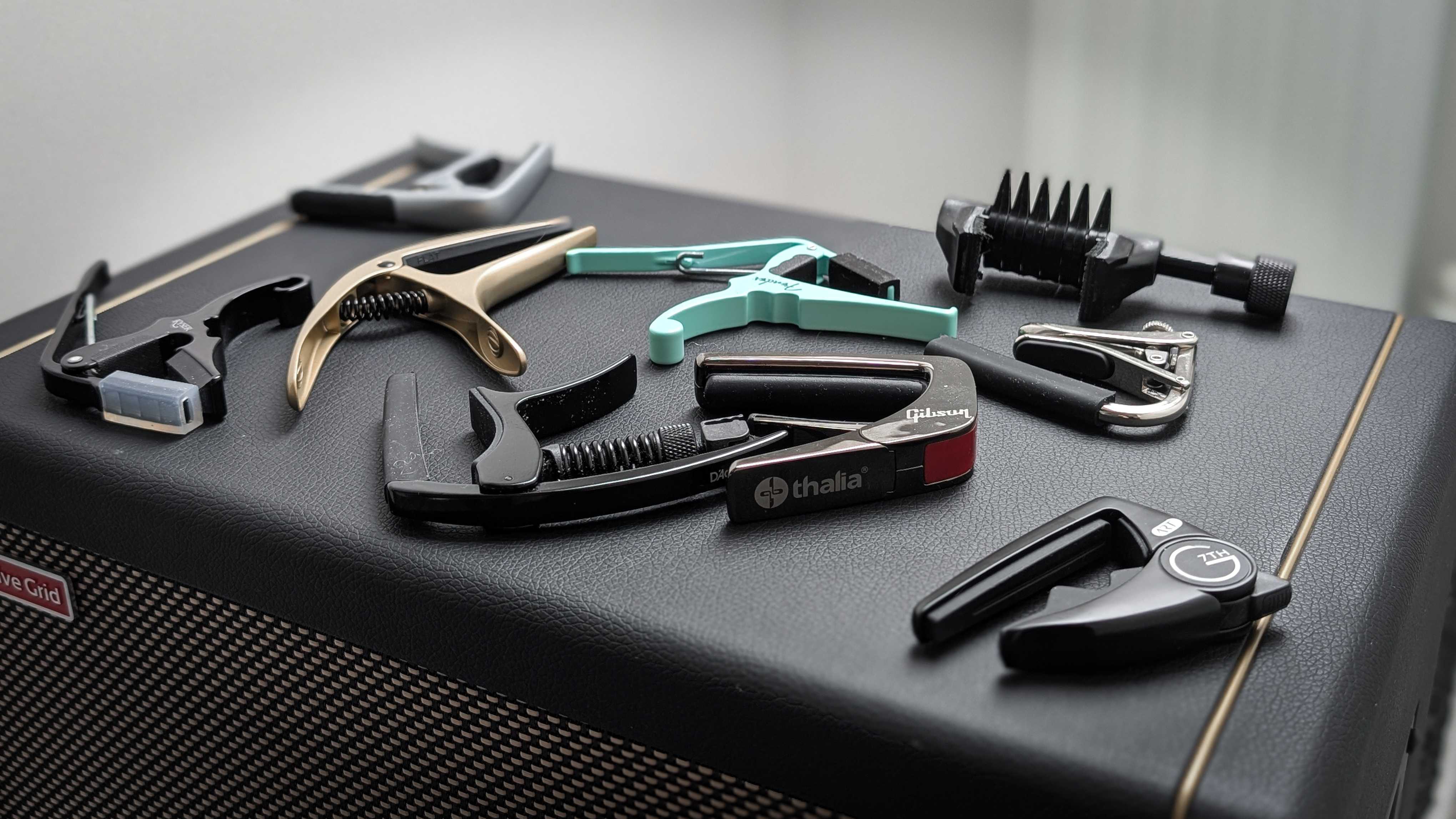
When it came to testing each capo, I wanted to ensure I gave them the best possible chance to perform the way the manufacturer intended. To achieve this, I selected a diverse range of guitars for my evaluations, spanning both acoustic and electric models. My primary acoustic guitar was a Gibson J-45, which served as an excellent benchmark. For electric guitars, I opted for a Fender Stratocaster for the six-string tests, and a Squier Jazzmaster XII for 12-string testing.
During the tests, I placed each capo at various positions on the neck, from the first fret to the twelfth, to evaluate how they affected playability and intonation across different frets. I meticulously used a Boss TU-3 tuner after placing each capo to ensure the intonation remained stable and accurate, which is crucial for maintaining pitch consistency. This step was particularly important to assess whether the capos could hold strings down firmly without causing any unwanted sharpness in pitch.
Additionally, I took note of the ease of use of each capo. I assessed how quickly and securely I could apply and remove them, the feel of the grip against the strings, and whether they caused any buzzing. I also conducted a series of playability tests, playing scales and chords in various positions to determine how each capo affected the overall feel of the instrument.
After evaluating sound quality and ease of use, I turned my attention to durability. I scrutinized each capo's construction, examining the spring mechanism and materials used. I checked for sturdiness in how the capo was put together, as well as any flexibilities or weaknesses that could arise from extended use. I also performed a dynamic test by applying the capo repeatedly over a series of practice sessions to see how they held up under regular playing conditions.
Overall, my testing approach aimed to provide a comprehensive overview of each capo's performance, functionality, and longevity, ensuring that my conclusions would reflect true user experiences for fellow musicians.
Why trust us
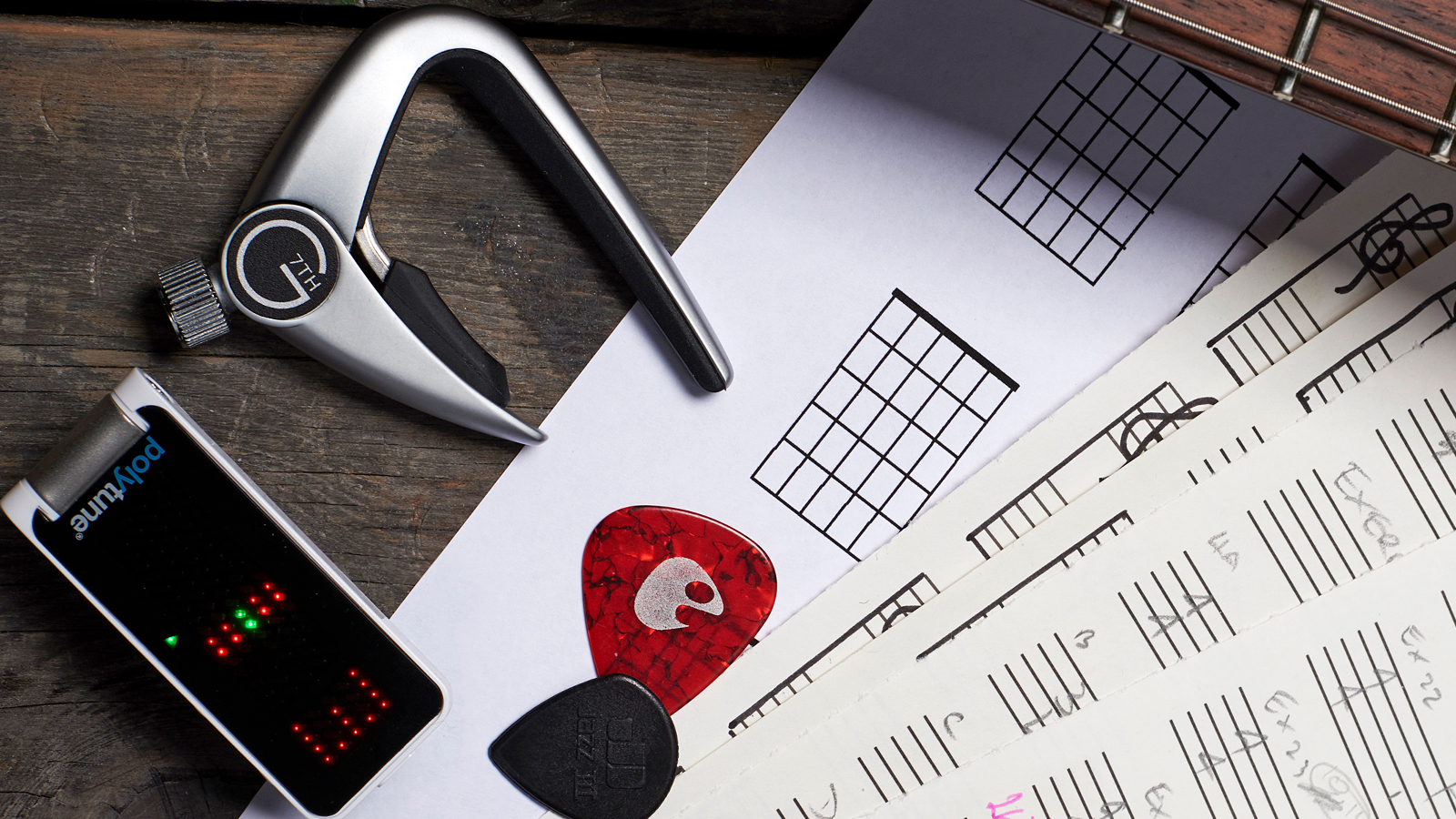
☑️ A global audience of 3.8 million guitarists monthly
☑️ 1,200+ reviews on GuitarWorld.com
☑️ 30+ years of product testing at Guitar World
Guitar World boasts over 44 years of expertise and stands as the ultimate authority on all things related to guitars. The magazine and website feature expertly written gear round-ups and top-quality, authoritative reviews penned by a team of highly experienced industry professionals.
Guitar World's inaugural print issue hit the shelves in July 1980, and ever since, it has been captivating players and enthusiasts with engaging lessons, insightful interviews with the biggest guitar heroes, and priceless buying advice for newbie players.
Furthermore, GuitarWorld.com continues this legacy online and serves as the hub of the world's foremost authorities on guitar playing. The site not only hosts content from Guitar World but also showcases articles from respected publications such as Guitarist, Total Guitar, Guitar Techniques, and Bass Player. With a reach extending to 3.8 million players each month, GuitarWorld.com is a go-to destination for guitar fanatics globally.
28/07/25: This guide has been completely overhauled. I called in a large number of capos to fully test and evaluate. From the 10 I tested, I chose 6 as my top picks. The guide now includes useful information on how to choose a capo, and I've answered a bunch of frequently asked questions.
Read more
You can trust Guitar World
- Stay in tune with today's best clip-on guitar tuners
- Speed up your tuning with our pick of the best guitar tuners
- Up your plectrum game with the best guitar picks
- Enhance playing comfort with one of the best guitar straps
- Plug in with confidence using the best guitar cables
All the latest guitar news, interviews, lessons, reviews, deals and more, direct to your inbox!
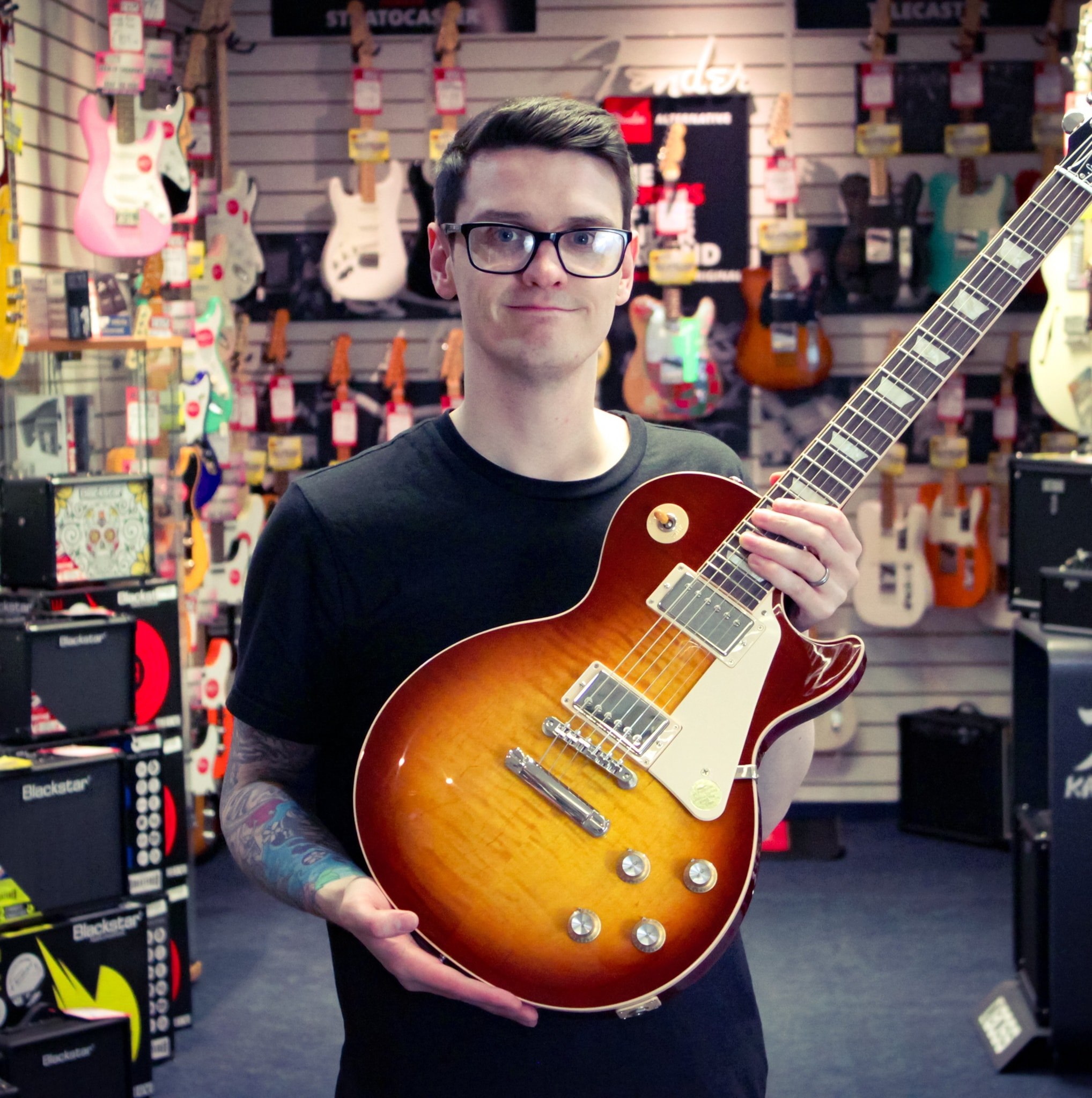
Daryl is a Senior Deals Writer at Guitar World, where he creates and maintains our 200+ buyer's guides, finds the best deals on guitar products, and tests the latest gear. His reviews have been featured in prominent publications like Total Guitar, Guitarist, Future Music magazine, and MusicRadar.com.
During his career, he has been lucky enough to talk to many of his musical heroes, having interviewed Slash and members of Sum 41, Foo Fighters, The Offspring, Thrice, and more. In a past life, Daryl worked in music retail. For a little under a decade, he advised everyone from absolute beginners to seasoned pros on the right gear for their needs.
Daryl is a fully qualified sound engineer, holding a first-class Bachelor's degree in Creative Sound Production from the University of Abertay.
